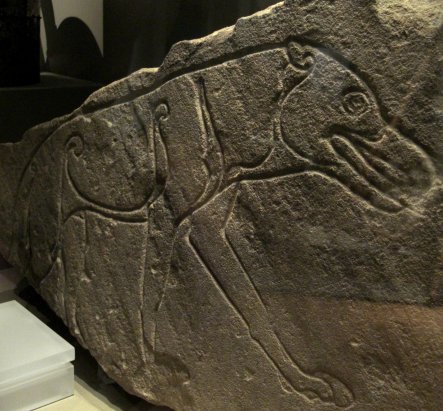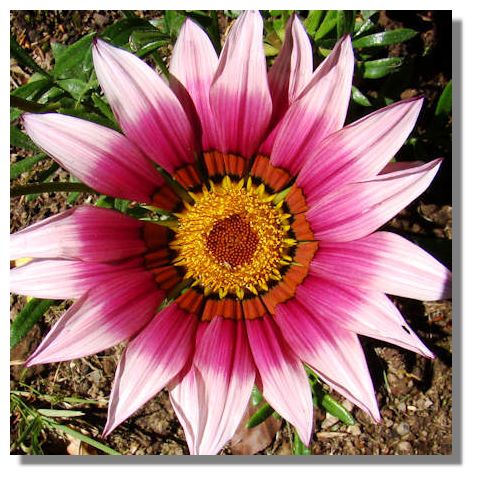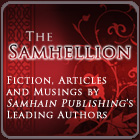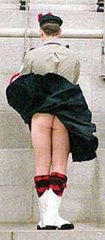 Welcome back to Celtophile Monday, in which I present a collection in interesting tidbits gleaned from the web. All sources credited. Enjoy!
Welcome back to Celtophile Monday, in which I present a collection in interesting tidbits gleaned from the web. All sources credited. Enjoy!
Web Photos of the Week
Megalithic Portal. Collection of magnificent photos of megalithic treasures. Browse by country or type of site.
Scotland Wins Race for Children's Olympics
Not content to rest on the laurels of Glasgow winning the 2014 Commonwealth Games, Scotland has been working hard to bring the International Children's Games (known as the Mini Olympics) to Lanarkshire in 2011. Nearly 200 young competitors from more than 70 countries will be descending on the area after the selection committee made a unanimous decision in at a meeting in San Francisco. Lanarkshire was up against Singapore and the city of Daegu in South Korea for the right to stage the event. North and South Lanarkshire worked together on the joint bid and will be the first region ever to host to the Games. Until now they have always been awarded to cities. Events will take place all across the region, including in the four largest towns of Hamilton, Motherwell, Cumbernauld and East Kilbride. Teams of athletes aged between 12 and 15 represent cities as opposed to countries in the Children's Games. Rampant Scotland
Nothing to "Grouse" About...
The giant drinks company Edrington Group has posted a record profit of £75 million on global sales of £291.5 million. Famous Grouse whisky contributed to that success and became the country's top-selling brand for the 27th consecutive year. The company is planning to expand production, which will be good news for the 500 workers in Glasgow. The industry's fastest bottling plant there already has 20 lines and produces 600 bottles of whisky a minute. There are plans to increase that to 800 bottles a minute, with most of them gift packs for the Famous Grouse and Cutty Sark blended range. 36 million bottles of Famous Grouse leave the Glasgow production lines each year and go to over 100 countries. Rampant Scotland
Job Drain Isn't Limited to U.S.
One of Scotland's iconic knitwear brands is likely to close its factory in Hawick, with the loss of 80 jobs. Instead, Pringle of Scotland will move its production to Italy. The company was taken over by Fang Brothers in 200 and they have invested £45 million in the brand, which has increased sales as a result. But last year the textile company lost £9 million and blamed the "changing nature" of the competitive market. Manufacturing costs in Italy would be 30% lower than in Scotland but the company's history in the Borders dates back to 1815. There were calls for the company to stop using the "Pringle of Scotland" marketing and change it to "Pringle of Italy". But the company's HQ and office staff will still be located in Hawick. Rampant Scotland This Week's Color Photos from Rampant Scotland
This Week's Color Photos from Rampant Scotland
Click here
Antonine Wall is New World Heritage Site
The Antonine Wall, built by the Romans across central Scotland, from the river Clyde to the river Forth, isn't visible from orbiting spacecraft in the same way as the Great wall of China. Indeed, it's hard to even see the wall on the ground. But this week Unesco's world heritage committee put it in the same august category by putting it in the same league as the Great Wall in China and the pyramids of Egypt. The Antonine Wall runs for 37 miles from Bo'ness in West Lothian to Old Kilpatrick in West Dunbartonshire (see map above). But unlike the stone-built Hadrian's wall further south (roughly along the border between Scotland and England) it was constructed of turf on a stone base. So much of it has been eroded and lost, leaving behind some ditches and a few bath houses used by the Roman garrison. The structure begun in 138 AD, during the reign of Antoninus Pius. It was designed to keep back marauding Caledonian tribesmen and marks the most northerly walled frontier of the Roman empire. A press conference was held this week at the well-preserved remains of a Roman bath-house and latrine, built in the 2nd century AD to serve a small fort in what is now Bearsden, East Dunbartonshire. Rampant Scotland
Ring of Brodgar
A team of archaeologists and scientists, including experts from Orkney College, the University of The Highlands and Islands, Manchester University and Stirling University, are undertaking a month-long investigation programme at Orkney's Ring of Brodgar, one of Western Europe’s most impressive prehistoric sites. The third largest stone circle in the British Isles is part of ‘The Heart of Neolithic Orkney’ World Heritage Site, designated by UNESCO in 1999. Little is known about the ancient site, including its exact age and purpose. The last major study there was in the 1970s and analytical techniques such as dating have advanced considerably since then. Trenches dug in 1973 will be re-excavated and there will be geophysical surveys - at least 40 stones can be identified but there are spaces for 20 more and the investigations should reveal what is actually there beneath the ground as well as above. Rampant Scotland
Scottish History This Week
July 13 1249 - King Alexander III crowned at Scone July 14 1927 - Scottish National War Memorial opened.
July 15 1889 - National Portrait Gallery for Scotland opened in Edinburgh.
July 16 1328 - David II, son of Robert I (the Bruce) married Joan, sister of Edward III (he was 4, she was 7).
July 16 1970 - 13th Commonwealth Games opened in Edinburgh.
July 17 1695 - Bank of Scotland, first bank to be established by an Act of the Scottish Parliament, opened.
July 18 1792 - John Paul Jones, naval hero of the American Revolution, died; he was born in Kircudbrightshire in 1747.
July 19 1333 - Battle of Halidon Hill in which Sir Archibald Douglas (guardian of David II) routed by Edward Balliol and Edward III. Scots losses were nearly 600, English losses 14.
July 20 1651 - Battle of Inverkeithing. Royalist force supporting Charles II failed to halt advance of army of Oliver Cromwell heading for Perth.
July 21 1796 - Robert Burns dies in Dumfries, aged 37.
July 22 1298 - The army of the English King Edward I, using longbows for the first time, defeated the Scots led by Sir William Wallace at Battle of Falkirk.
July 23 1745 - Charles Edward Stuart landed on Eriskay at the start of the 1745 campaign. July 24 1567 - Mary Queen of Scots abdicated and the young James VI acceded to Scottish throne. The Earl of Mar was appointed regent.
July 24 2002 - The Princess Royal formally opened the Loch Lomond and The Trossachs National Park, Scotland's first national park.
July 25 1394 - King James I born.
Rampant Scotland
Nicknames of Scottish Towns
A list of the nicknames for Scottish cities and towns. In some cases, it's the residents rather than the town itself that carry the nickname.
Scottish Blog of the Week
Squidgy the Otter
Serious Concern Over Seabirds
Early reports from coastal reserves indicate continuing problems for the internationally important populations of guillemots, kittiwakes and others. Nests have been abandoned, with cliffs which "should be teeming" now empty. RSPB Scotland has called on the Scottish Government to ensure that it puts the environment at the heart of new legislation. Speaking ahead of the launch of the Marine Bill Consultation on Monday, the bird conservation group said evidence suggested these repeated annual breeding failures are now substantially reducing populations of certain species. Colonies on the Northern Isles of Orkney and Shetland - together said to be Scotland's most important "seabird cities" - have been hit particularly hard. Read more on BBC Scotland
Riders Trace Tudor Journey to Bosworth
Seven horse riders in period costume are aiming to retrace the route taken by Henry Tudor more than 500 years ago from Pembrokeshire to Leicestershire.
On Sunday they started the journey taken by Henry Tudor which culminated in the defeat of Richard III at the Battle of Bosworth in 1485. Setting off from Dale near Milford Haven, the riders plan to take six days to travel more than 100 miles. The Henry Tudor Ride aims to raise over £50,000 for the Army Benevolent Fund. Read more on BBC Wales
14 July 2008
Celtophile Monday
at
12:45 AM
![]()
Labels: celtophile monday, Scotophile Monday
Subscribe to:
Post Comments (Atom)





















No comments:
Post a Comment